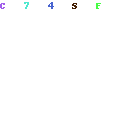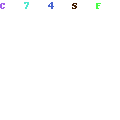Shoes For Scoliosis
Scoliosis is a medical disorder defined by an abnormal curvature of the spine; shoes do not immediately treat or cure scoliosis.
Treatment options for scoliosis may include the following. It is usually controlled and treated by medical experts, such as orthopedic specialists:
Observation: If a kid has mild scoliosis, particularly if they are still developing, their condition may need to be checked often to make sure the curvature doesn’t become any worse.
Bracing: To assist stop the growth of the spinal curve in more moderate instances, a scoliosis brace, also known as an orthosis brace, may be provided. Usually, these braces are worn for a certain amount of hours per day.
Physical Therapy: To strengthen the muscles that surround the spine and to improve posture, physical therapy exercises and stretches may be suggested.
Surgery: Spinal fusion surgery may be required to straighten the curvature and stabilize the spine in severe instances of scoliosis if the curve is advancing quickly or creating other health problems.
Although they are not a direct therapy for scoliosis itself, supportive shoes and orthotic insoles may be used as part of scoliosis care to aid with general posture and comfort. Physical therapists and orthopedic experts may provide advice on appropriate footwear and orthotic choices that can aid with scoliosis pain reduction and alignment improvement.
Scoliosis
The medical disorder known as scoliosis is characterized by an atypical curvature of the spine, resulting in either a “S” or “C” shape. Although this disorder may affect people of any age, from newborns to adults, puberty is when it is most often diagnosed.
There are a few important things to know regarding scoliosis:
Causes: Although the precise etiology of scoliosis is unknown, a combination of neuromuscular, genetic, and environmental factors may be to blame. The reason is often idiopathic, which means it is unknown.
Types: Based on the age of onset and the underlying cause, scoliosis may be divided into many types:
The most prevalent kind of scoliosis that has no known etiology is called idiopathic scoliosis. It often manifests in adolescence.
Congenital Scoliosis: Occurs at birth and is often caused by improper growth of the vertebrae.
Neuromuscular Scoliosis: Occurs due to spinal cord injury, muscular dystrophy, and cerebral palsy, among other diseases.
Degenerative Scoliosis: This condition usually affects older persons as a result of age-related alterations in the spine.
Symptoms: Uneven shoulder or hip height, a noticeable curvature of the spine, and in some situations, back discomfort and muscular imbalances are the most typical signs of scoliosis. The degree of curvature may affect how severe the symptoms are.
Diagnosis: X-rays and physical examinations are common methods used to detect scoliosis. The Cobb angle is used to determine the curvature degree.
Therapy: The course of action for scoliosis is determined on the severity and age of the patient.
Options for treatment consist of:
Observation: Consistent monitoring may be advised for minor curves that show no signs of improvement.
Bracing: To stop mild scoliosis from becoming worse, a back brace may be recommended.
Physical therapy: Stretches and exercises may strengthen the muscles that surround the spine and aid with posture.
Surgery: To rectify the curvature and stabilize the spine, severe cases—especially those that are advancing quickly or creating other health issues—may need to have spinal fusion surgery.
An orthopedic expert usually determines the treatment strategy after taking into account the patient’s age, the degree of curvature, and the possibility of advancement. Effective management of scoliosis and the avoidance of consequences depend on early identification and treatment. Consult a healthcare provider for a medical examination and advice if you think you or someone you know may have scoliosis.
Best Shoes For Scoliosis
Dr. Scholl’s Prevent Pain Lower Body Protective Insoles, 1 Pair, Men’s 8-14, Protects Against Foot, Knee, Heel, and Lower Back Pain, Trim to Fit Inserts

Premium Adjustable Orthopedic Heel Lift for Heel Pain and Leg Length Discrepancies – Large Pack of 2

Dr.Foot Adjustable 5-Layer Height Increase Insoles, Silicone Heel Cushion Inserts for Men and Women, Gel Heel Lift Inserts for Leg Length Discrepancy

FAQs
Can scoliosis be treated with certain shoes?
Although they might provide support and comfort, shoes cannot cure scoliosis in and of themselves. Orthotic insoles and well-fitting shoes may aid with scoliosis pain reduction and posture improvement.
If I have scoliosis, what qualities should I seek for in shoes?
Take into account the following while selecting shoes for scoliosis:
- Arch Support: To assist preserve correct alignment and lower the chance of foot pronation or supination, look for shoes with strong arch support.
- Select footwear with sufficient cushioning to absorb impact and lessen strain on the joints and spine.
- Stability: Proper ankle support and a solid heel counter in shoes may aid with balance and stability.
- Correct Fit: Make sure the shoes are well-fitting and do not pinch or restrict the feet.
Do heels exacerbate scoliosis?
Wearing high heels might cause your posture to change and your weight to move forward, which may make scoliosis-related pain worse. It is best to stay away from really high heels and choose shoes that provide adequate support and a more balanced weight distribution.
For scoliosis, should I use custom-made orthotics or orthotic insoles?
People with scoliosis may benefit from custom-made orthotics or orthotic insoles. These tools may improve general comfort and posture by supporting your feet and encouraging good alignment. To find out whether custom orthotics are required, speak with a podiatrist or orthopedic doctor.
Is there a better shoe brand for scoliosis?
The choice of shoe brand is based on personal tastes and the unique requirements of the scoliosis sufferer, thus there is no universally applicable solution to this problem. Seek for trustworthy shoe companies that provide a range of alternatives for supportive and cozy shoes. Experiment with several brands and designs to see which ones suit you the best.
I’m choosing shoes for my scoliosis; should I see a specialist?
Seeking advice from an orthopedic doctor or podiatrist is a good option if you have scoliosis and are having problems with your balance or pain. They may provide tailored advice on suitable footwear and, in case specialized orthotic solutions are required.
Can shoes relieve discomfort associated with scoliosis?
Although shoes cannot cure scoliosis-related pain, they might lessen discomfort by offering the right alignment and support. Selecting the appropriate Choosing the right footwear can contribute to improved posture, reducing the strain on the spine and muscles.







